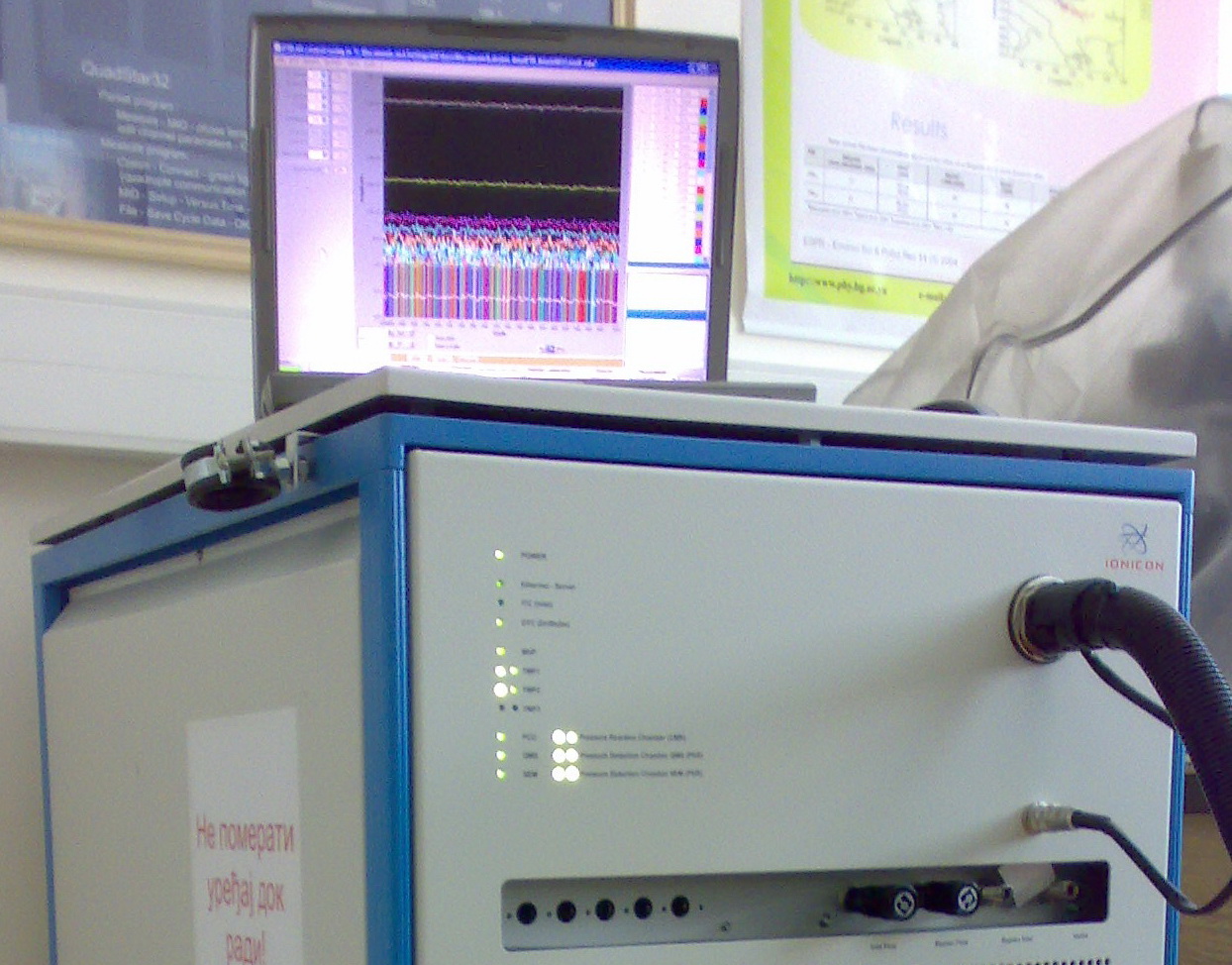Proton Transfer Reaction Mass Spectrometer - PTR-MS
Proton-transfer-reaction mass spectrometer (PTR-MS, Ionicon Analytik, Innsbruck, Austria) allows real-time measurements of volatile organic compounds (VOCs) in air with a high sensitivity, fast time response and low detection limit, without special sample preparation (direct whole air sampling).
This tool uses a soft ionization method based on proton transfer from H3O+ ions to all compounds with a higher proton affinity than water. Common constituents of air such as N2, O2, Ar, CO2 etc. have a lower proton affinity and are therefore not detected. This leads low detection threshold for trace compounds in the range of a few pptv.
The apparatus consists of three main parts:
-the ion source where H3O+ ions are produced by a hollow cathode discharge using water vapor as the molecular source of ions;
-the drift tube where proton transfer reactions to the trace constituents in the air occur;
-the ion detector which provides sensitive detection of mass selected ions characteristic of the molecules of interest
-the drift tube where proton transfer reactions to the trace constituents in the air occur;
-the ion detector which provides sensitive detection of mass selected ions characteristic of the molecules of interest

PTR-MS-Control LabVIEW based software application is user friendly and flexible. This is modular, clearly structured and allows the user to control the PTR-MS via Ethernet.
Technical Specifications:
Mass range: 1 - 512 amu
Resolution: 1 amu
Response time: 100 ms
Measuring time: 2 ms/amu - 60 s/amu
Detection threshold: 30 pptv
Linearity range: 30 pptv - 10 ppmv
Adjustable flow: 50 - 500 sccm
Inlet system heating range: up to 150°C
Reaction chamber heating range: 40 - 120°C
Turbomolecular pumps: 2
Power supply: 100/230 V, max 750 W
Dimensions (w x h x d): 78x86x55 cm
Weight: 130 kg
Resolution: 1 amu
Response time: 100 ms
Measuring time: 2 ms/amu - 60 s/amu
Detection threshold: 30 pptv
Linearity range: 30 pptv - 10 ppmv
Adjustable flow: 50 - 500 sccm
Inlet system heating range: up to 150°C
Reaction chamber heating range: 40 - 120°C
Turbomolecular pumps: 2
Power supply: 100/230 V, max 750 W
Dimensions (w x h x d): 78x86x55 cm
Weight: 130 kg
Main interfaces:
- Ethernet 10/100MBit RJ45 (TCP/IP)
Optional features:
- Individually tailored software package
- Data interfaces (digital/analog I/O)
- Switchable Reagent Ions (SRI): H3O+, NO+ and O2+ as precursor ions
- Data interfaces (digital/analog I/O)
- Switchable Reagent Ions (SRI): H3O+, NO+ and O2+ as precursor ions
